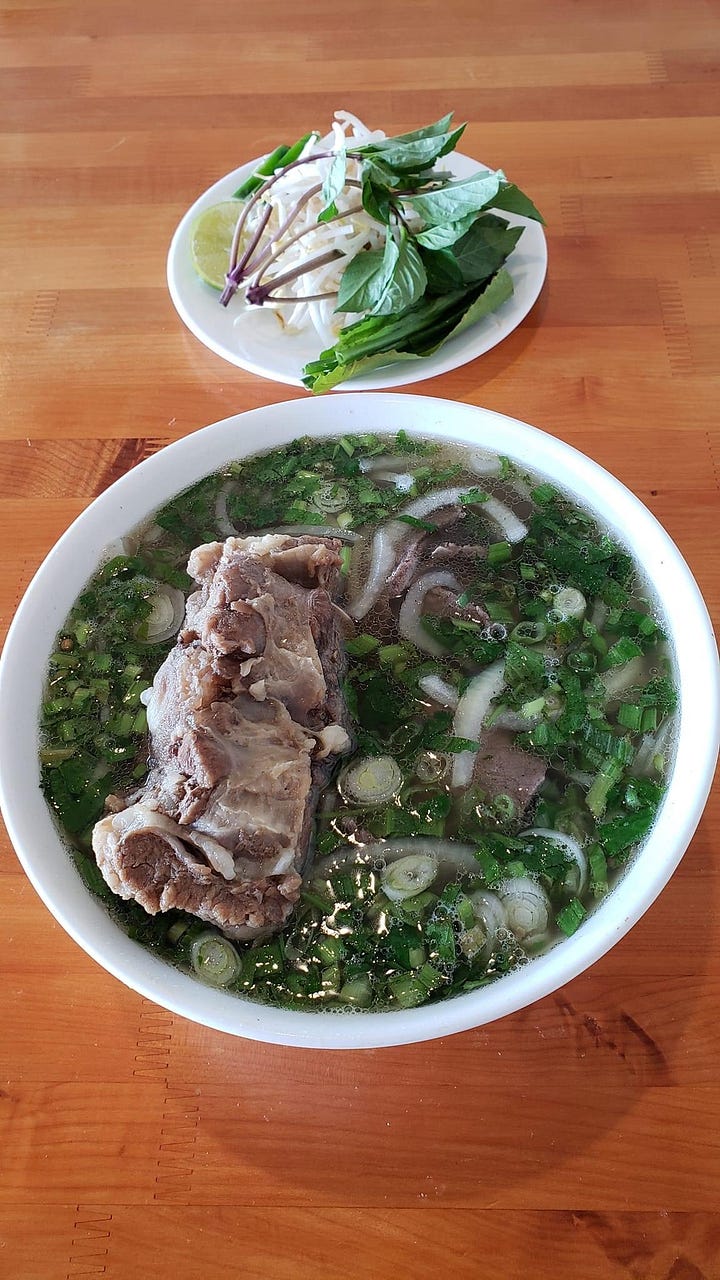I’ve gotten many requests over the last year or so to drop a pho recipe.
My reluctance was that a classic pho, namely the precious broth, can take many hours to make which would not appeal to most home cooks who prefer fast and quick meal preps.
But Pho is one of my favorite soup go-to’s to order out and being in Hong Kong a lot now there are plenty of good options


So to split the difference I’m going to drop a classic-ish pho recipe then follow with a shorter pho recipe in the next post and some other Vietnamese condiments that you probably want to keep on hand to amp up flavor in your meals on a moments notice.
The Broth
If you talk to native Vietnamese people you will quickly find that Pho and its’ broth can be divided between North & South flavor profiles. Or Saigon vs Hanoi.
The pho broth that I love is almost crystal clear, not cloudy. A result of low and slow simmering. Rapid boiling will emulsify fats and proteins that will make a broth cloudy which is fine when you’re making Tonkotsu Ramen but that’s not what we are after here.
Also the aromatics and spices that go into pho are wholly unique. Charring alliums to add a subtle sweet and smoky notes plus warming spices create a broth that is quite literally “healing”. A bowl of this when you have a sinus infection or head cold is medicinal and delicious.
You can’t discuss pho broth without discussing bones. Since this is beef pho, which is classic, you’ll want to get a variety of beef bones. Given the cost of beef bones I’d recommend a 1:1:1 ratio of neck bones, marrow bones and knuckle bones. (Try and get knuckle bones with lots of connective tissue which will add some richness to the broth).
Blanching the bones is mandatory IMO for a clear and pure broth; more on that below.
Building Your Pho Bowls 🍲
The beauty of pho is that once you have your broth, the soup comes together relatively quickly making it a great weeknight meal; freeze your broth in quart containers and thaw the day before you want your pho.
The hack here is to hit up your local asian market and get the paper thin sliced beef steak. Once your dried flat narrow rice noodles are cooked you lay in the thinly sliced beef steak and ladle your broth over, which cooks the steak immediately and keeps it tender as well.
As for toppings?
I love to add fresh thai basil, mint, cilantro, bean sprouts, scallions, jalapeno and a dash of sriracha if I want an extra zing.




